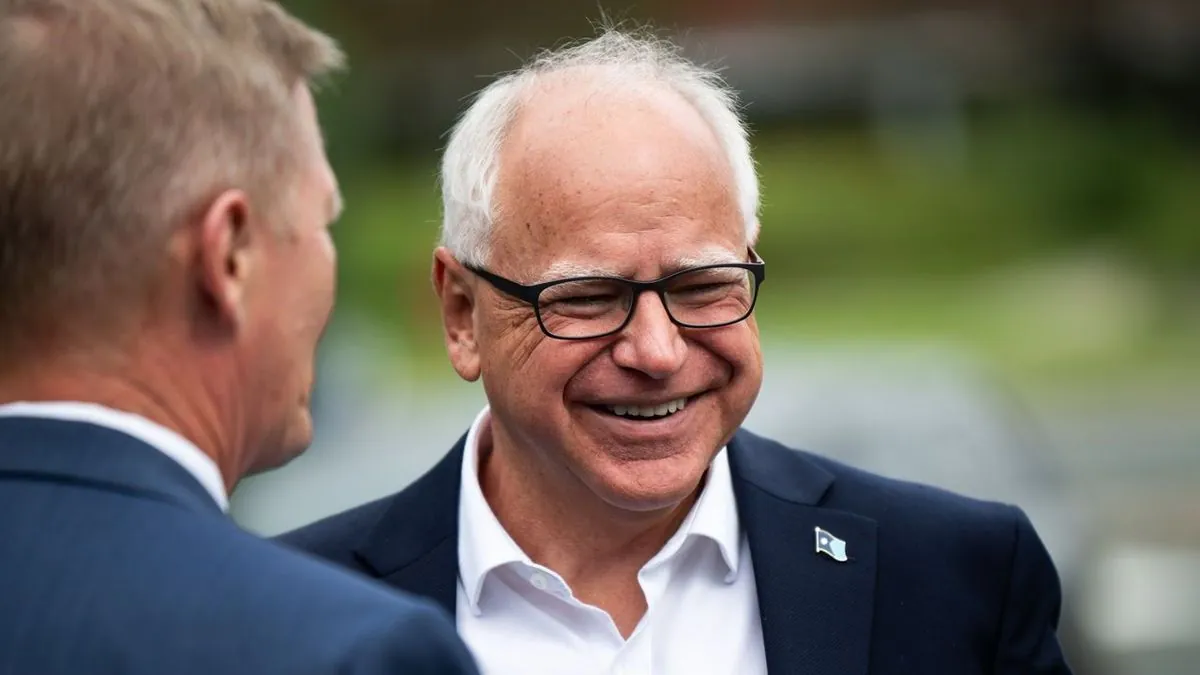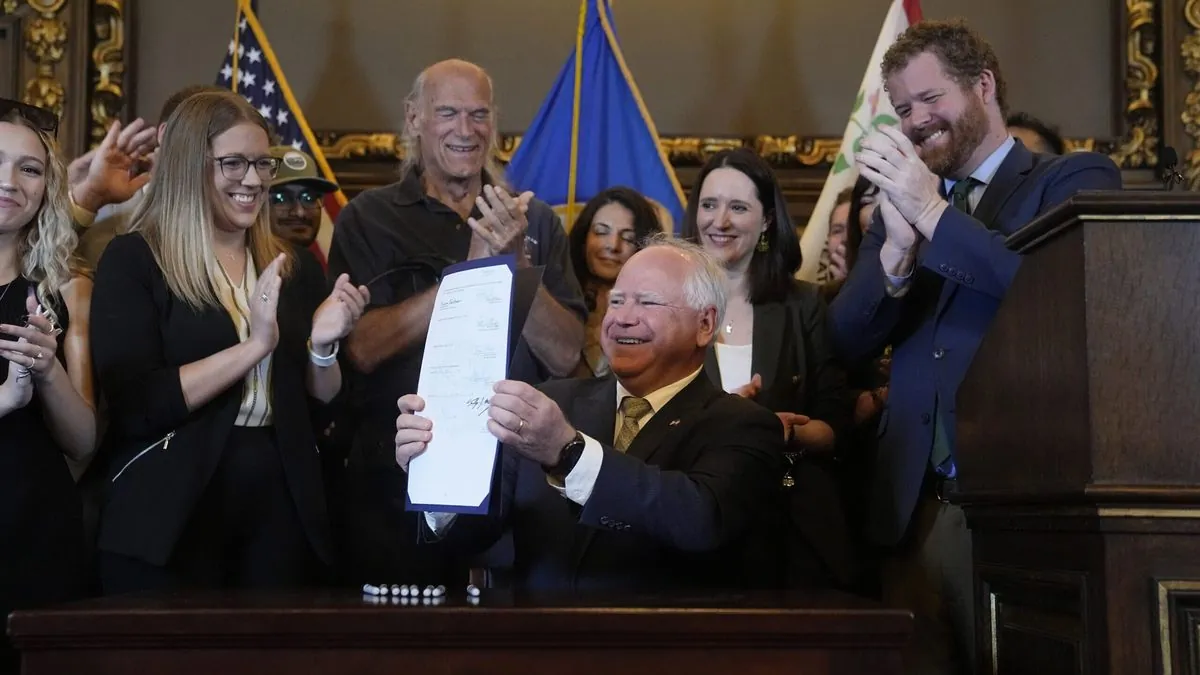Harris Taps Minnesota Gov. Walz as VP Pick: Strategic Move or Risky Choice?
Vice President Harris selects Minnesota Governor Tim Walz as her running mate, sparking discussions on the impact of this relatively unknown politician on the campaign's strategy and voter appeal.

Vice President Kamala Harris has chosen Minnesota Governor Tim Walz as her running mate, a decision that has sparked discussions about its potential impact on the upcoming election. While Walz is not widely recognized nationally, with over 70% of Americans lacking an opinion on him, this choice may have strategic implications for the Harris campaign.
Walz, who has governed Minnesota since 2019, brings a diverse background to the ticket. A retired Command Sergeant Major in the Army National Guard and former high school teacher, he served as a U.S. Representative from 2007 to 2019 before becoming governor. His tenure has been marked by significant policy initiatives, including legalizing recreational marijuana, implementing gun control measures, and advocating for renewable energy.

The selection of Walz comes at a crucial time for the Harris campaign. Recent polls indicate a shift in voter enthusiasm following Harris's nomination, particularly among key Democratic constituencies. In New York, for instance, Harris now leads Donald Trump by 14 points, a significant improvement from Joe Biden's single-digit lead in June.
While vice-presidential picks historically have limited impact on electoral outcomes, Walz's appeal among certain demographics could prove valuable. Polling data suggests he performs well with women, younger voters, and non-White voters – groups crucial to Harris's electoral strategy.
"The safest bet, of course, is that it won't make much difference at all."
Critics argue that Walz's relative anonymity could provide an opportunity for opponents to define him negatively. However, the upcoming Democratic convention offers a platform to introduce him to a national audience.
The Harris campaign's decision has garnered support from both centrist and progressive Democrats, suggesting a potential unifying effect. As the election approaches, the impact of this choice on voter enthusiasm and turnout will be closely watched, particularly in key battleground states.
Ultimately, the selection of Tim Walz reflects the campaign's strategic calculations, balancing factors such as regional appeal, policy alignment, and potential to energize the Democratic base. As the race unfolds, the wisdom of this choice will be tested against the complex dynamics of national politics and voter preferences.


































